Get to Know…Lee Stanton
The esteemed shopkeeper – and president of the LCDQ from 2009 to 2018 – believes antiques should be lived with and enjoyed.
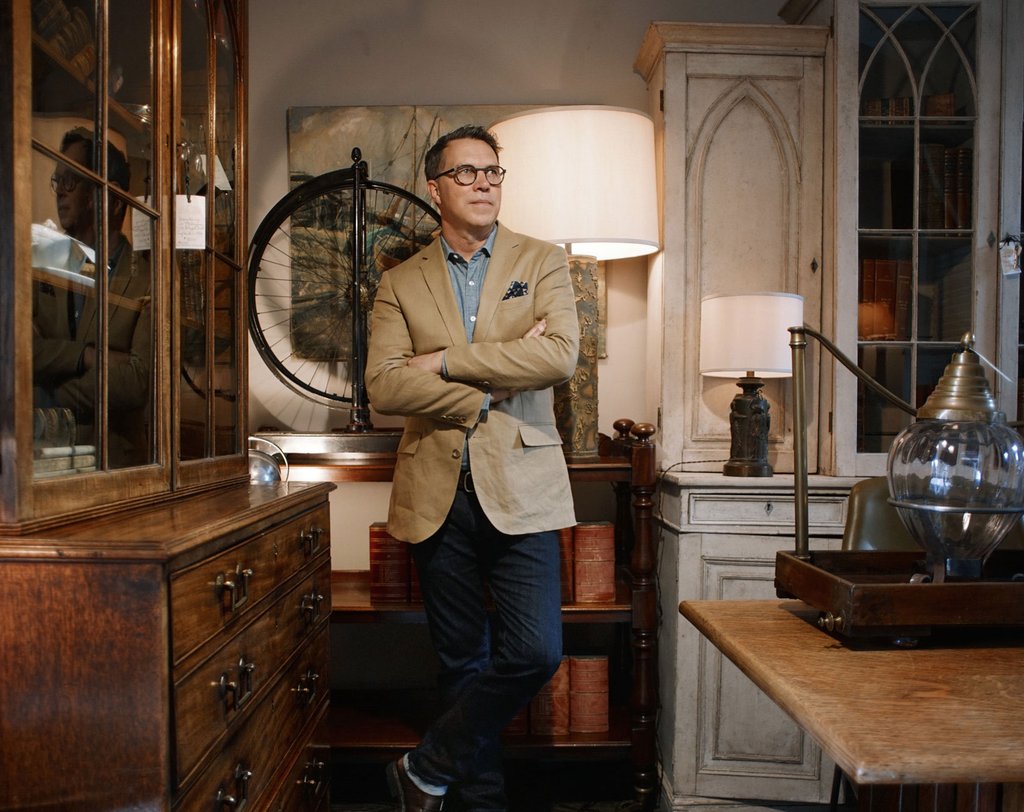
Lee Stanton was raised in Ohio among a family passionate about antiques and design. “My mother and father collected antiques and my grandfather restored antiques. I often worked alongside him in his workshop,” says Stanton. By his side, the shop owner and designer absorbed invaluable knowledge about the history, materials, and construction of furnishings. His mother encouraged him to shop for antiques with her and pick out pieces that would become his earliest collections, everything from antique toys to wood puzzles.
Lee took a bit of detour before becoming one of the most respected and popular sources for distinctive furniture, art, and accents in the country. Instead of launching straight into the design business, Stanton started a magazine for senior citizens after graduating from USC. The magazine was successful and after taking it as far as he wanted to, Stanton sold it, finally ready to get into a business he had “sole creative control of, from beginning to end.” It seemed predestined, going back to his roots. So, in the late 80s, Stanton took over the existing business of a well-known antiquarian in San Juan Capistrano who was retiring. Given his vast knowledge of design, it was the perfect fit.
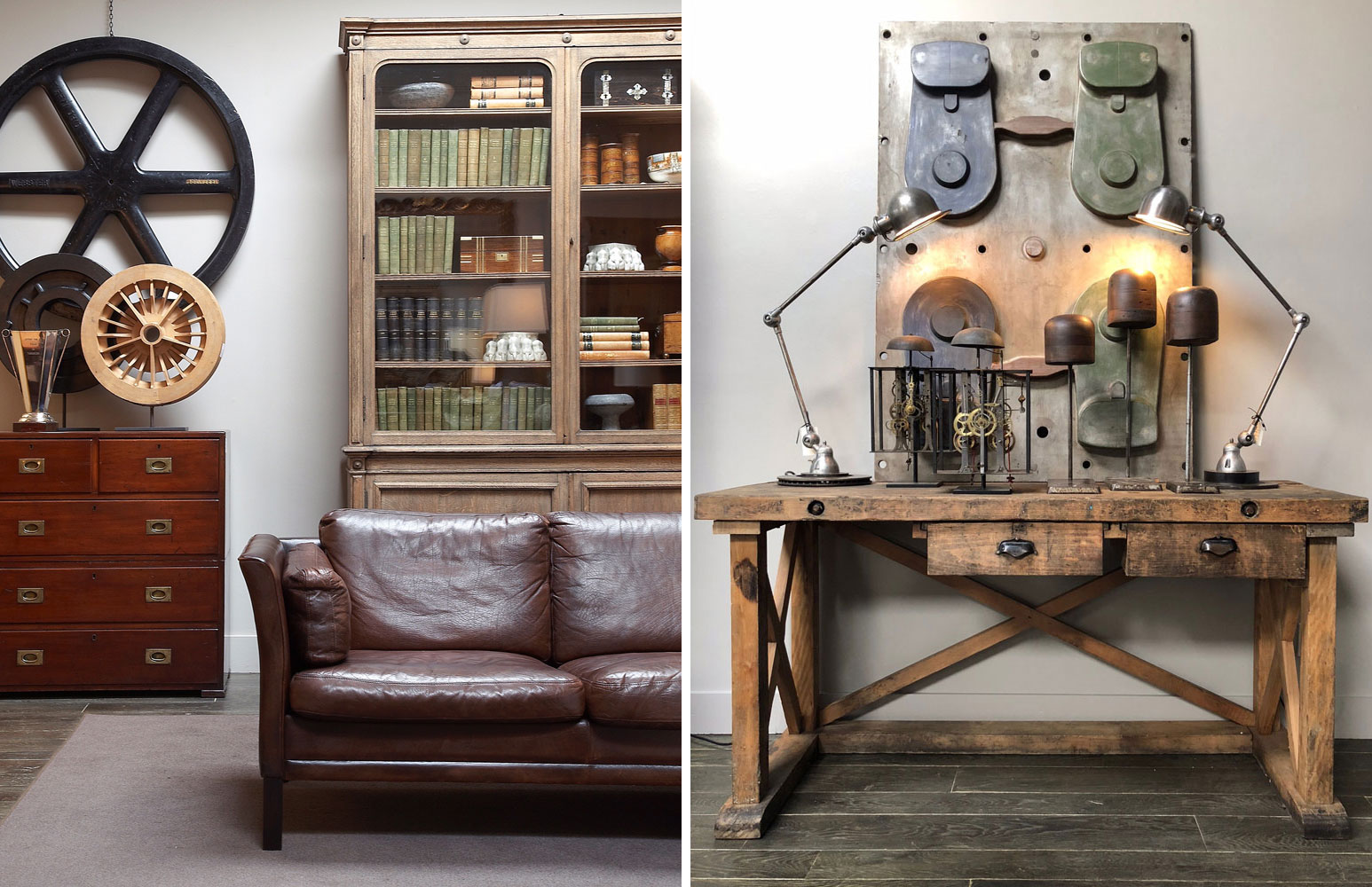
It didn’t take long for word to get out about Stanton’s eye for quality and distinctive finds. Soon, noteworthy L.A. designers were making the trek to buy from him, in some cases, clearing out half his inventory. Stanton decided that a shop in L.A. was the next move.
Since opening his doors, he has become one of the most respected and popular destinations for top designers near and far. One reason may be that Stanton’s passion for pieces is infectious and he never puts a piece out on the floor that he wouldn’t be delighted to have (and use) in one of his carefully designed homes. (He has designed his own houses in Laguna Beach, Los Angeles, and Montecito.) “I think if an antique has good form and is functional, and you love it, you’ll always find a place for it – and it will always be something that you appreciate,” says Stanton.
“My approach to antiques has always been that they should be lived with and enjoyed, rather than stuffed away and preserved.”
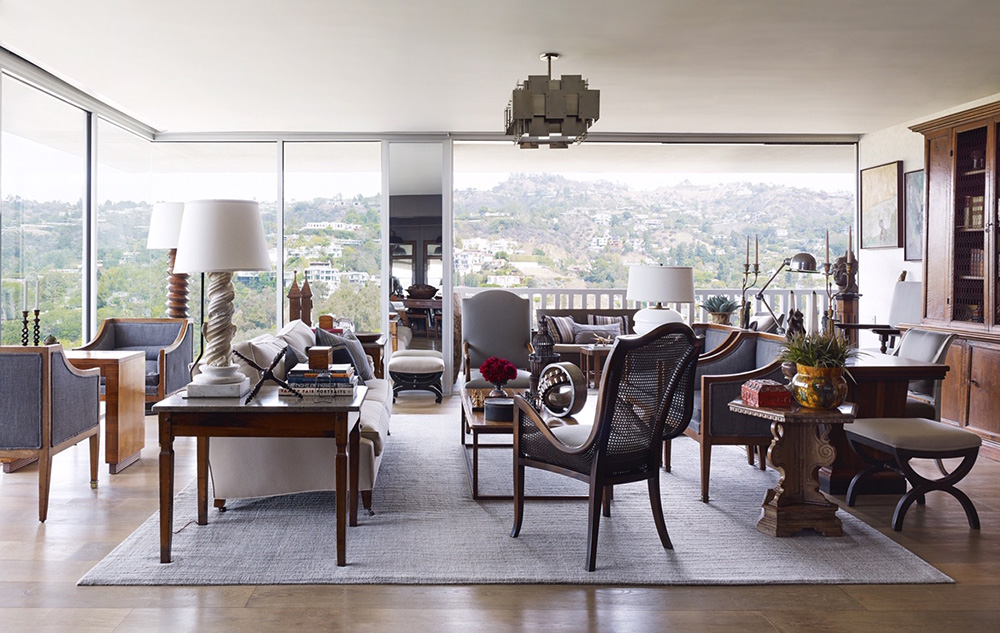
Here, Stanton shares more of his antique and design wisdom.
What do you first look for in a piece? Is there a common thread or does it change?
“I tend to like things that have a certain sort of personality. Like an armchair that has really big studs on it, that conveys masculinity and makes it stand out. I usually like to have things that have some sort of character that makes them unique in their own way. It seems to say, ‘look at me, and appreciate me for what I am.’”
You seem to like a bit of surprise too…
“Yes. I like juxtaposition to a certain extent. I like to throw some things in my window that make you wonder. I recently had these huge bottles from an old perfumery. I thought, I don’t know what people will do with them but these are cool.”
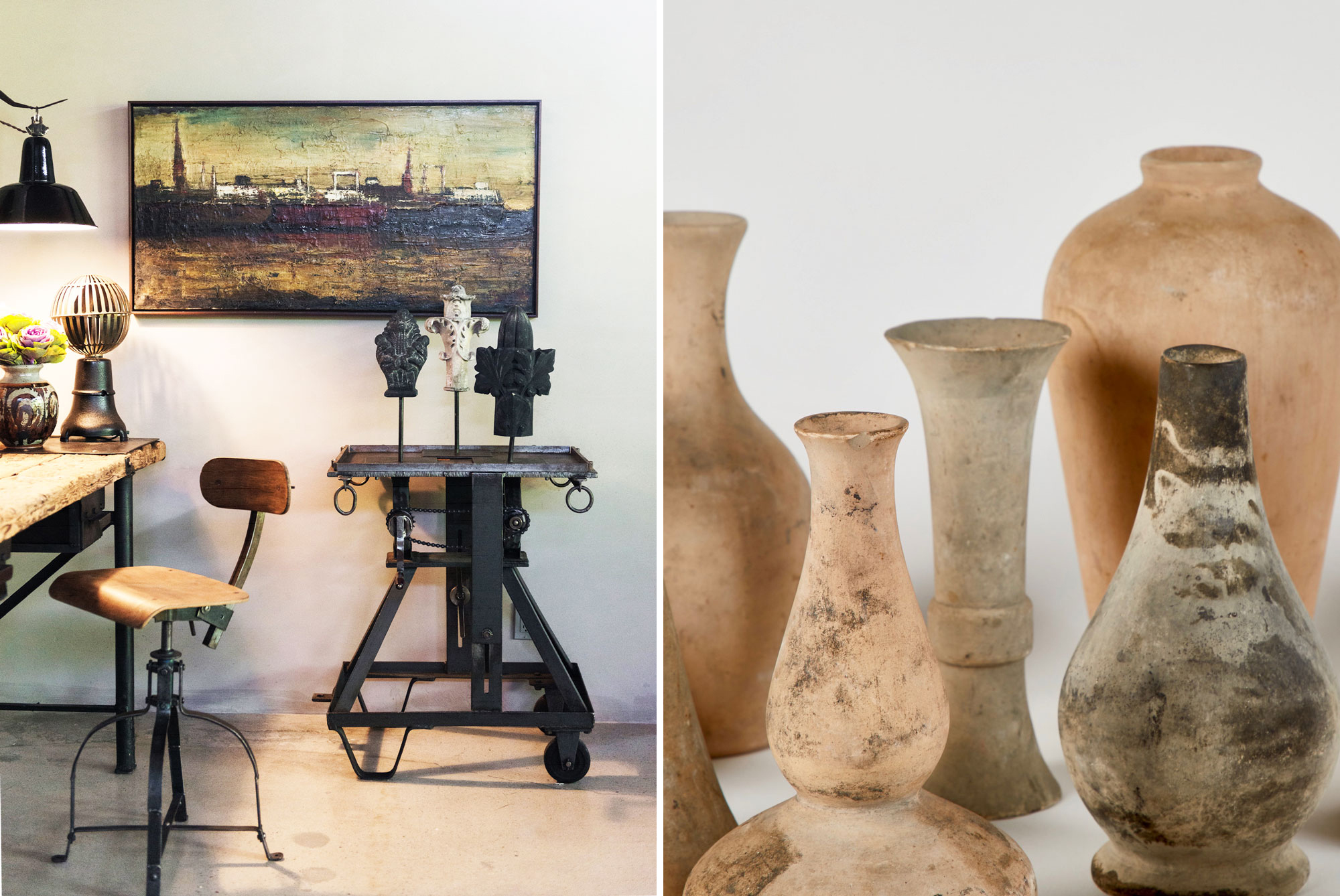
How do you feel about antiques being seen and not used?
“There’s a misconception that antiques have to be considered precious. Antiques have lived a very long time and they have been used, worn, loved. Why not continue that story? I like pieces that tell a story about how someone has used them. Like when you see the wear on a chair arm that someone rested their hand. You can picture them reading the paper in that chair for 20, 30, or 50 years. My hope is that people relate to the story the pieces tell rather than treating them as if they were objects.”
What do you think antiques bring to an interior?
“The old style of collecting was ‘I only collect 18th-century items’, or ‘I only collect pre-war items.’ That is an old fashioned way of thinking. I think that especially as we have homes that often do not have a sense of the personality or depth, antiques add that sense of the depth of personality that we need in our homes. It adds that charm, that story, and the ability to tell a story. I love when a client comes in or a designer comes in with their client and says, “Tell me about this piece.” Because I know that when they have that dinner party a year from now, they’re telling the story that I told them.”
I love when a client comes in or a designer comes in with their client and says, “Tell me about this piece.” Because I know that when they have that dinner party a year from now, they’re telling the story that I told them.”
After seeing so much, how do you keep yourself inspired or curious about new things?
“For me, most of the inspiration comes from travel. And surrounding myself with creative people. That includes the creative people that I work and associate with daily, as well as the people I meet around the world, in France, Belgium, England and Italy. It allows you to go one step further. If you happen to walk into an art gallery, and you like the artist, and you love their style, you ask them, ‘what is your favorite antique shop?’ Which leads you somewhere else.”
What do you love most about being a shopkeeper here, working with the designers, collectors, and shoppers that come through the doors each day?
“For designers, I sort of like to think of myself as a trusted resource, because I find that most designers come to me and they’ll have something that they’re looking for and they’ll say, “Well, you know what I mean.” And I do. I can usually interpret what a designer needs very easily.
For shoppers, I love that they come in for the experience, and that they are hunting for something with a sense of individuality. They want something that will be just theirs and that will be different than anyone else HAS in their house. I love to see someone come in and connect with a piece and appreciate its unique look, color, or texture. We live in a community that everyone wants something unique and that is what antiques and my showroom is all about.”
Do you think that sense of individuality is influenced by living in Los Angeles?
“We are very fortunate in Los Angeles to live in a community with creative people. As opposed to some other communities, everyone here wants a sense of individuality. And as far as design, you are going to find some of the most unique projects here. I think our community is strongly influenced by the entertainment industry and a sort of confidence to live a lifestyle that is unique and a bit on the edge. That you can take risks.”
“If you buy what you love, you’ll always find a place for it.”
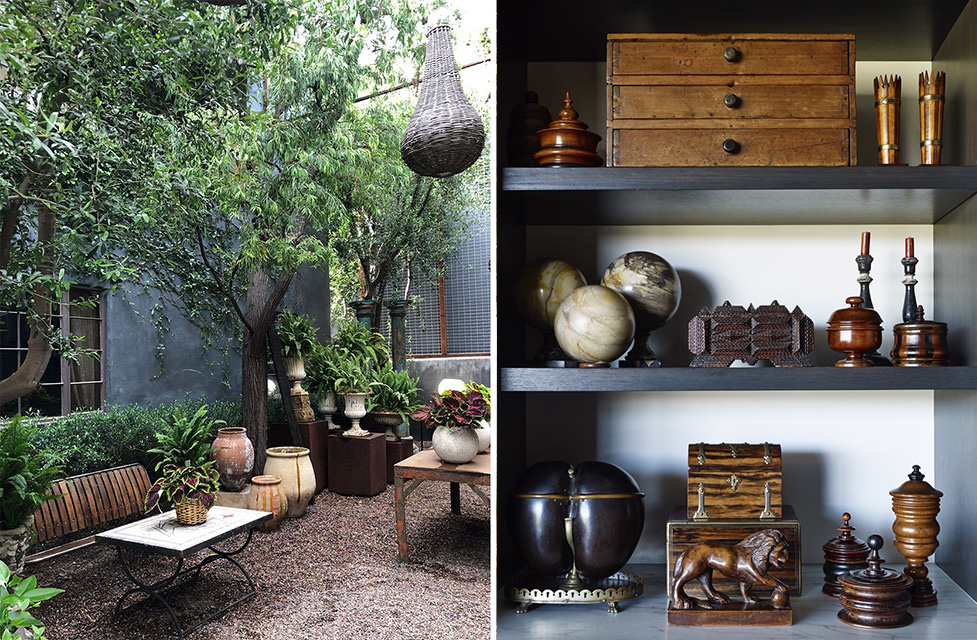
What advice do you have for a novice buyer looking to select antique pieces?
“My advice to people would be to start small… What I mean by that is to start with the number of antiques that you feel comfortable with. A lot of people feel like they have to be committed to a whole interior of antiques in order to enjoy a few pieces. I like to see people appreciate antiques in small doses, and allow their appreciation and taste for antiques evolve naturally. Whether it be contemporary or traditional pieces, don’t be afraid to mix it up, a very primitive metal or rustic wood box looks incredible with a contemporary piece of art. Just enjoy antiques for what they are, rather than the fact that they are antique. There are general tips, like mixing textures, mixing scale, but most importantly buy what you love. If you buy what you love, you’ll always find a place for it.”
Your store is so well styled. Any tips on decorating with pieces that you can share?
“It is okay to have a theme but contrast is always more interesting. Put something fat with something skinny; something light with something dark. That way, a piece pops and can be appreciated in the space.”
Instead, I mix them in with other things. Also, contrast is always more interesting. Put something fat with something skinny; something light with something dark. That way, a piece shines a bit more or pops in the space.”
So it seems you tinker yourself, constantly changing things up here?
“I like to play with things. I will try something here or there. I will think oh, the sun is hitting this nicely here or this will look good with that over there. It’s kind of like playing house. As I said, I select everything by hand myself and I only buy things that I love. I have an opportunity to enjoy things temporarily until it becomes somebody else’s. And so, I feel like to a certain extent, I am the guardian of that piece until it finds a home.
I’m not in the antique business to sell antiques as if they were a commodity. I’m selling them because I love them and I’m hoping somebody else appreciates them as much as I do.”
What do you think makes the shops and shop owners here in the LCDQ unique?
“I think that every single member in our quarter, and every single store in our quarter, has a unique purpose and has a clear vision of what and who they want to be and what they want to sell. With that comes a passion, it comes with devotion, it comes with knowledge. You will walk away from here with an experience and a unique collection of items that all have a precious purpose in your home.”
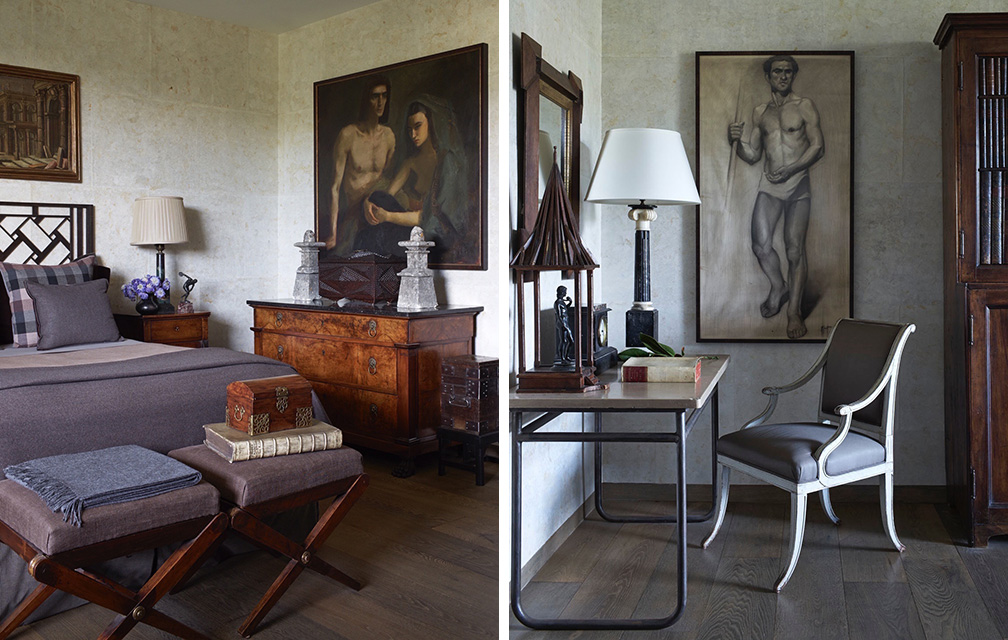
Lee Stanton Antiques
769 N. La Cienega Blvd.
Los Angeles, CA 90069
T (310) 855-9800
leestanton.com
